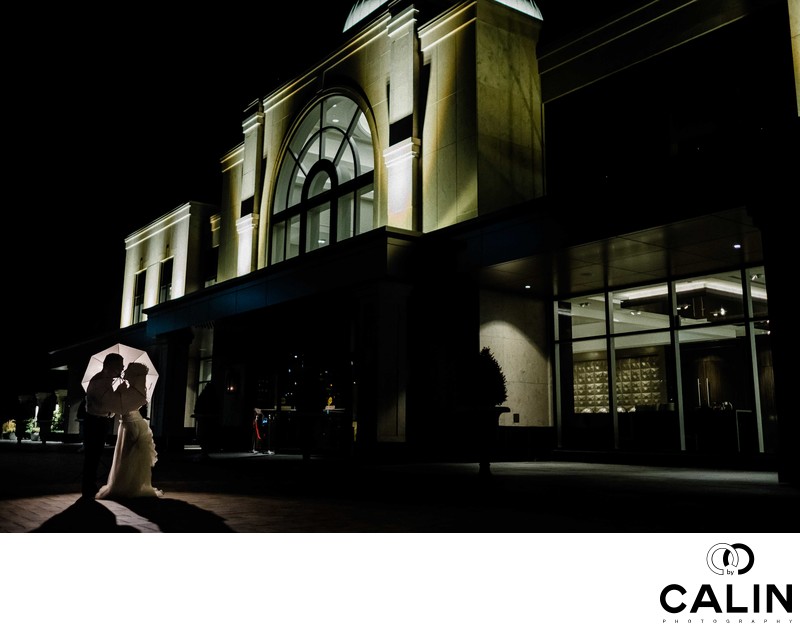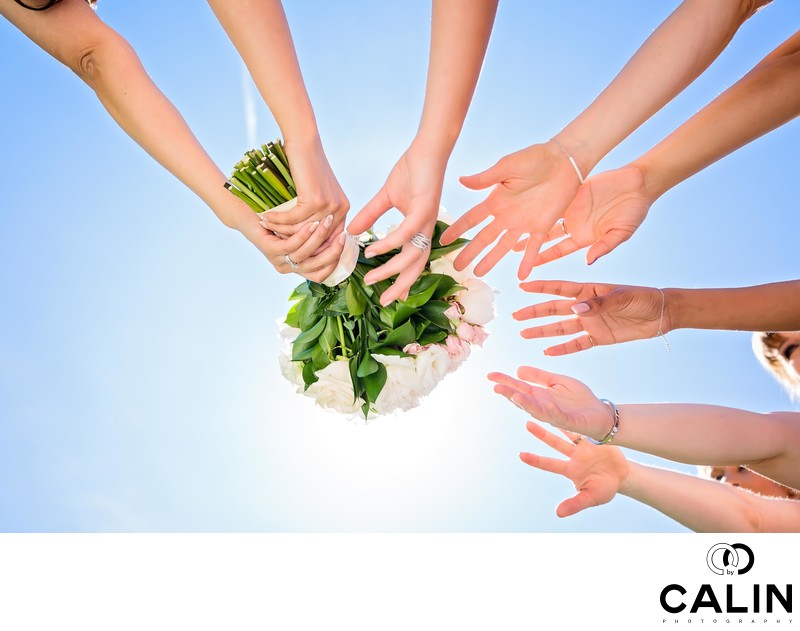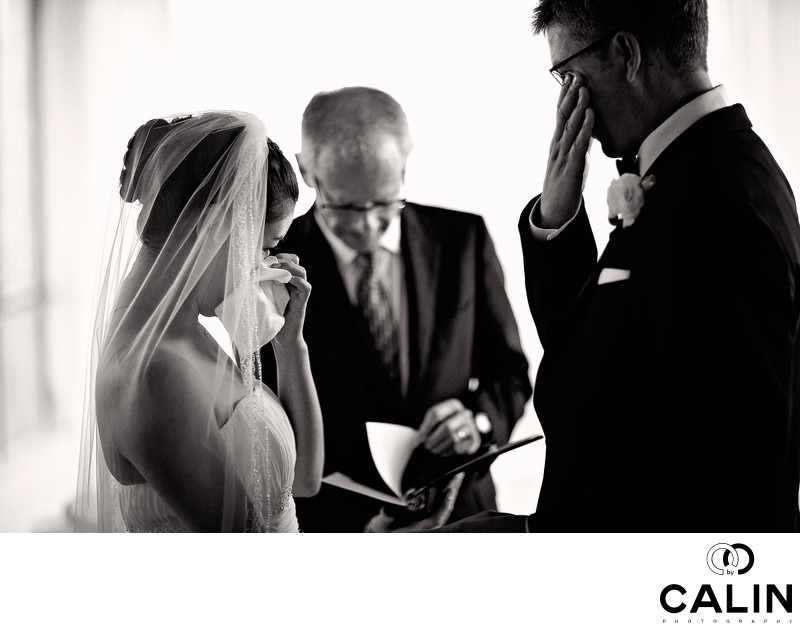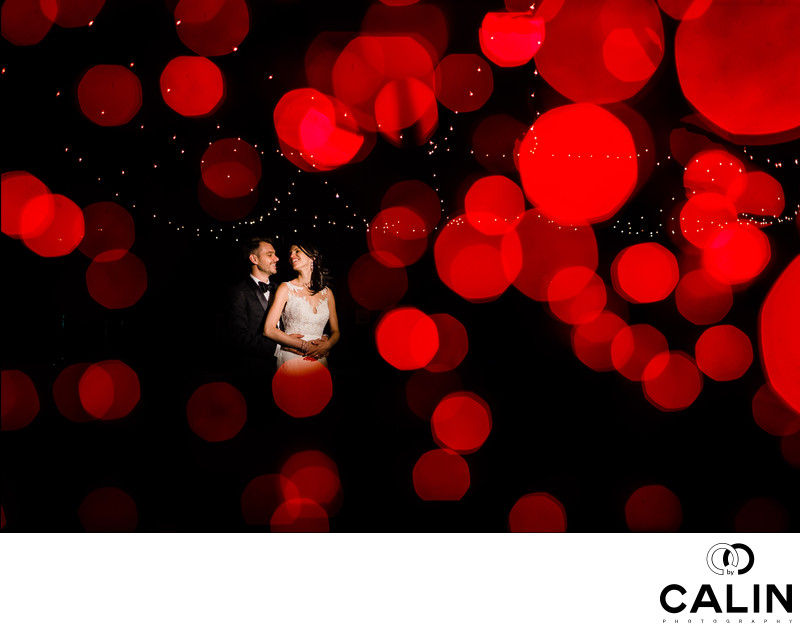25 Reasons Why I Switched to Fuji
Many wedding photographers wonder if they should switch from a DSLR system Nikon or Canon to a mirrorless one such as Fuji or Sony. Here are the main reasons why I decided to abandon Canon in favour of Fuji. Enjoy!

1. Fuji is Lighter
For wedding photographer, weight is one of the main enemies on the big day. We have to run around for 12 hours a day or so, think on our feet, be fresh, creative and deliver amazing images.
Especially in the summer, we sometimes photograph three back-to-back weddings and carrying 20 pounds of equipment can take a toll on a photographer's body. Enters Fuji, with its mirrorless XT cameras that weigh about 40% of the Canon DSLRs or even less if we consider the flagship 1D series.
After abandoning Canon I felt rejuvenated and photographing weddings was again a joy. Honestly, I don't think I would be shooting marriages anymore if I would still use the DSLRs. Gone are the shoulder or back pain that would inevitably occur after a long day when I was lugging around two Canon bodies with their massive glass.
2. Fuji Equipment Costs Less
While we are all artists at heart, to survive in this competitive industry we need to run or studios like a business and cost is an important element of that. Fortunately, Fuji cameras and lenses cost only about 40% of their Canon or Nikon counterparts.
That makes the transition very easy because after selling your DSLR camera and lenses you will end up with money you can invest in advertising, a new laptop, the few presets and so on.
Of course cost is irrelevant if the quality of your imagery is negatively affected, which brings me to the next point.
3. Amazing Image Quality
I have to admit that at the beginning I was very skeptical and I did a lot of research to make sure that the quality of Fuji images is comparable to Canon's. Fortunately, a few wedding photographers encouraged me to jump ship and thanks to Kevin Mullins and Kevin Wyllie of KSG Photography, I was confident the new system can deliver.
To my surprise the images not only matched the quality expected from Canon but often blew me out of the water. The dynamic range especially is amazing. As of now, Fuji uses Sony sensors that deliver an incredible dynamic range. Also, the raw file delivered by my XT series cameras give me a big latitude in Adobe Lightroom.
For example, when shooting in rapid succession the bride walking down the aisle or the newlywed couples grand entrance during the wedding reception, sometimes the flashes don't trigger. As result, images are underexposed by two or three stops.
When I was shooting Canon, all those images were unusable no matter how much noise reduction I would apply in post production. With Fuji, I have absolutely no problem delivering those images to my clients. Thank you Fuji!
4. Stellar Low Light Performance
As professional photographers, we are often forced to shoot in less ideal situations. For example, I remember photographing in a dark church where the exposure was 3200 ISO, 1/60s f1.2. The priest did not allow flash photography in his church, which made things even worse. Sadly, my Canon 85 1.2 was very slow focusing and many of my images were either blurred or out of focus.
Of course I always tell my clients to walk slowly down the aisle, but in the heat of the special day, the brides and their bridesmaids totally forget that.
Nowadays, I'm not afraid of pulling out my 56 mm F1.2 when mounted on a XT3 amazing camera delivers wonderful images. The focus is fast, images are sharp and because of the crop factor, more photos are in focus. The F1.2 depth of field of a Fuji XT series camera is equivalent to that of a Canon full frame shot at F2.
5. Organic, Beautiful Grain
One of the things that differentiate my images after the transition is the beauty of the grain. I find that the Canon noise is horrible and I was doing everything to remove it in post production, often ending up with very soft images.
The Fuji grain looks natural and adds character to your images. Especially if one loves shooting film, the look of the Fuji will please her.
When shooting my Canon 5DIII, I was afraid to set the SO above 3200 but nowadays my Fuji film delivers usable images even at 8000 ISO.
6. Amazing Lens Collection
Many photographers are unaware of the fact that Fuji creates very expensive cinema lenses and telescopes. Some of those pieces of glass are more expensive than your house.
In a quest to conquer market share, Fujifilm made a strategic decision to use that cutting edge technology onto their photography lenses. I personally own the following pieces of glass: Fuji 16mm f1.4, Fuji 23mm f1.4, the super fast focusing 23mm f2 and 50mm f2, the stunning 56mm f1.2, the 18-55 f2.8 zoom (used mainlyas a backup or when I shoot alone) and a Zeiss 50 mm f2.8 macro.
While this article is not about the quality of the lenses, I have to emphasize the low weight, the low-cost and the incredible sharpness of the Fuji glass.
One of the things that impressed me was that with Fuji lenses there was no need for micro adjustments as the focus is accurate, which results in more keepers. With Canon and especially with a third party lenses, I had to calibrate the glass through a time-consuming process.
7. Splendid Skin Tones
The reason why many wedding photographers prefer Canon's for the beautiful skin tones the sensor renders. Fortunately, Fuji delivers skin tones as beautiful as Canon or Nikon.

8. Stunning Film Presets Result in Little Post Processing
Even though the company was late to jump into the digital arena (their business was film a few decades ago) their film presets look amazing in camera. My favourites are Classic Chrome, Provia and the unbelievably beautiful black and white Across with a red filter.
I know quite a few Fuji photographers who deliver their clients the beautiful JPEGs generated in camera. That reduces the post processing time drastically, resulting in a higher profit margin for the photographer while delivering the same quality to the couples. Also, the bride and grooms receive their photographs faster because there is no need to post processes the images of the artists gets the exposure and white balance right.
9. White Balance is Very Accurate
With the Canon I used to change the white balance any time the colour temperature changed (when I was shooting in the church I used tungsten, then outdoors daylight, then tungsten again for the reception). I never trusted the auto white balance but with Fuji I have full confidence the camera will get it right.
Because I have to spend less time changing settings, I can focus more on the moments and capture those beautiful images my couples love. Also that reduces my post processing time.
10. Exposure is Bang On
The beauty of the mirror less cameras with their electronic viewfinders is that you can preview the image before you press the shutter button. As a result, the exposure is accurate every time even in difficult situations such as that in the image below. With an optical viewfinder one would have to take a few test shots or overexposed by two or three stops and check their LCD screen. That would in variable make the photographer look bad in front of her clients.
Many photographers shoot in aperture value in this kind of image would be underexposed by two or three stops. However, with Fuji the exposure was accurate and it took me only a few seconds to capture this moment.

11. Firmware Updates Improve Cameras Dramatically
One of the things that impressed me was how much Fuji was listening to the photographers. They have a special department that collects complaints and fixes the most important of them through firmware upgrades. With my DSLRs I only saw one firmware update when they fixed a spelling error in Russian. Are you kidding me Canon?
Fuji released quite a few upgrades that made you feel you got a new camera. I read many photographers forums and they were shocked by these free gifts they received every few months. I think that's very smart for Fuji is the gained a huge base of loyal photographers.
Some naysayers argue that Fuji intentionally make their cameras dumb and the improve them through updates. That logic escapes me: when a manufacturer launches a new camera in a very competitive market, that camera has to beat competitors immediately, not after nobody buys it.
12. They Look Cool
Let's face it: the retro looking Fuji marvels look splendid and are often a conversation starter on the wedding day. In fact my challenge is how to avoid the guests asking me about my cameras so I don't miss any moments on the big day.
We are artists in the way we look matters. Combine the retro cameras with the Holdfast Moneymaker and a modern haircut (the ship has sailed for me and I can only showcase my bald head) and you get a super cool photographer.
13.The Tiny Cameras are Perfect for Documentary Photography
When I was rocking my Canon 70-200 mm mounted on a 5D Mark III enhanced with the battery grip I felt like a professional photographer. Sadly, I was not able to get any candid pictures. The second I would show up on the special day, everybody knew I was the higher photographer.
Whenever I would go and introduce myself to guests, the bridal party or vendors, they would smile, look at my gear and say "I figured that."
Since I switched to mirrorless, I gained superpowers. People think I'm just another guest taking pictures and they don't take me seriously. Amazing! I became invisible! That allows me to shoot beautiful candid images and people simply ignore me.
With a DSLR I would have never been able to capture images like the one below. 
Also, because of the small footprint of these cameras my subjects are less intimidated and give me perfect emotions.
Since I switched to these small cameras, waiters started offering me drinks during the cocktail hour, which confirms the fact I am perceived as just another guest. That is exactly what I wanted!
14. Perfect for Destination Weddings
If you shoot destination weddings, you are familiar with the strict weight limitations the airlines impose photographers. However, the small Fuji lenses and cameras allow the destination wedding photographer to travel easily around the world.
15. Electronic Viewfinder - Perfect for Sunny Conditions
In bright situations the photographer cannot check the images on the LCD and here, the electronic viewfinder of the mirrorless cameras is perfect. Even more important, the pro doesn't need to chimp (check the back of the camera).
A simple press of the play button allows the photographer to see the results in the EVF. Often, the bride and groom asked me if I got the shot and without looking at the back of my camera I can tell them "yes I did." That builds trust and reconfirms the made the right decision to hire me to document their special day.
16. Printers
Fuji released a few printers that communicate with their cameras and allow us to deliver Polaroid type prints to our clients. That allows the wedding photographer to differentiate herself in this crowded market where no photographer gives anything to the couple on the big day. Ultimately, that leads to more happy clients and referrals. Every single bride that receives those images on her special day shows them to the bridesmaids and the family members and about 80 to 90% of them shed tears when they see the images we took during the preparation, first look, ceremony and so on.
17. Low Light Image Previews
Fuji allows one to preview an image in very low light as if it is a normally lit scenario. In other words, it were as if you had an infrared camera (though it looks much better on Fuji) and you could see better what happens in the dark. You know, focusing on the eye and all that minor stuff we artists worry about.
18. Tilt Screen
For some reason, Canon 5D III and IV don't offer a tilt screen. I am a huge fan of creative angles and as you can see if you flip through my portfolio, I often shoot from ground level or from above my subjects. With my Canon, my rate of success was around 20% on a good day, but with Fuji, it jumps in the 90% range. Plus, I don't have to get dirty on a wedding day, which is a great advantage. Only my dry cleaning lady hates my tilt screen and I totally understand why.
19. Face and Eye Detection
That is a huge one! Being able to switch to face detection and pick on which eye you want your camera to focus is crucial. In the past, I had my second shooter grab my belt and direct me during the recessional so that I don't bump into furniture, decor or worse, people! Nowadays, I switch to face detection and bingo! I get the shot while my second takes his shots from another angle. The infamous confetti exits can be now immortalized with the face and eye detection features.
20. Preview the Scene in Black and White for Better Photos
Removing the colour distractions allow the professional photographer to see better the light and composition. This is a trick I learned a long time ago and unfortunately, with Canon I could only shoot the jpegs in black and white. In other words, I would shoot a frame, look at my LCD and then shoot again. With my new mirrorless, the same process takes only a fraction of the time.
21. Live Exposure Compensation
This is a huge one. Being able to underexpose by 3 stops for example, allows me to shoot images like the one below. Now too shabby for a toy camera my full frame colleagues.

22.Ability to See the Exposure TRiangle in an Instant
On the Fuji, you are able to see the ISO, Shutter Speed and F-Stop, which is amazing if you are in situations when you have to change your settings fast and be discrete.
23. Intuitive and Offers Amazing User Experience
While I absolutely urge you to read the camera manual if you do professional work, one could just pick up a Fuji and start shooting. It is that intuitive. The buttons just make sense to photographers.
24. Fun Camera
The main reasons photographers love Fuji is that they are super fun! This is a more abstract concept and the best comparison I can think of is that between an automatic minivan and a manual convertible. The DSLRs feel like computers and Fuji feels like a friend.
25. You can use the DSLR lenses You Already Own
The Metabones adapters allow you to use your existing lenses, arguably with some auto focus issues. Still, I sold my old Canon lenses, made enough money and bought the Fuji counterparts. NEW!
Negative Aspects of the Transition
During my transition from DSLR to mirror less I hit a few minor bumps in the road.
First, the battery life of mirror less cameras is nowhere close to their DSLR counterparts. The solution to that is to carry more batteries, which are small and light. However at almost $100 per battery, you will need an extra $1,000 to have enough juice and peace of mind on the wedding day.
Second, there are cultures where bigger cameras equal better photographers. I had a few couples who were disappointed when I mentioned I photographed small cameras. In the beginning of my career, I used to carry a huge pelican case with two camera bodies and several lenses and that would impress my clients. Nowadays, I know the camera is completely irrelevant in the quality of the images does not depend on my tools.
Some clients and photographers are of the opinion that full frame cameras are better than the crop ones. I would challenge everybody to look at my website and without analyzing the EXIF information to tell me which of my images were captured with a Canon or Fuji.
Fuji flashes are not at the same level at their Canon or Nikon counterparts and fortunately you can buy third-party brands that will do the job just fine.
The XT2 cameras froze in continuous shooting modes and when using the grip. I was using OEM batteries and fast cards so I was really upset. It is a fact many photographers experienced and my most dramatic situation was when, during the bride and groom grand entrance my camera froze. I did as well...for a second, then I pulled the battery out and restarted the XT2. Whew, I was able to get a few good shots and escaped unscathed.
Backlighting your scenario is a horror scenario for many Fuji cameras including the XT2. I was simply about to give up and sell every Fuji piece of gear. Thankfully, the last firmware upgrade fixed most of that. The XT3 is a beast and it is perfect including in backlit situations!
Also, in the beginning, Adobe had a really bad interpretation of Fuji raw images - Lightroom had notorious artifacts and the images looked wormy when sharpened. Still, over the span of two years Adobe upped their games or maybe I became better at processing those files. Anyway, the fact is now I love the look and the time it takes me to process the beautiful Fuji raw files.
The tilt screen is not ideal...it feels flimsy at times and it isn't intuitive. The flip screen is something that I hope Fuji will introduce in the future. Keeping our fingers crossed!
The remote app is not that good and I hope they upgrade it soon!
Some photographers call the mirrorless "toy cameras" and they would never adopt the system. Well, we still have wedding photographers who don't have an Instagram account.
Epilogue
I had waited for Canon to improve their game for about four years and I finally gave up, sold my DSLR gear and converted to Fuji. Nowadays, I should 100% Fujifilm camera and lenses and some amazing third-party flashes. My XT3 cameras are reliable and deliver amazing results.
Last and very important, I am not a Fuji brand ambassador and I was not paid to write this article. What you just read are my personal opinions and I don't sell any camera gear. The